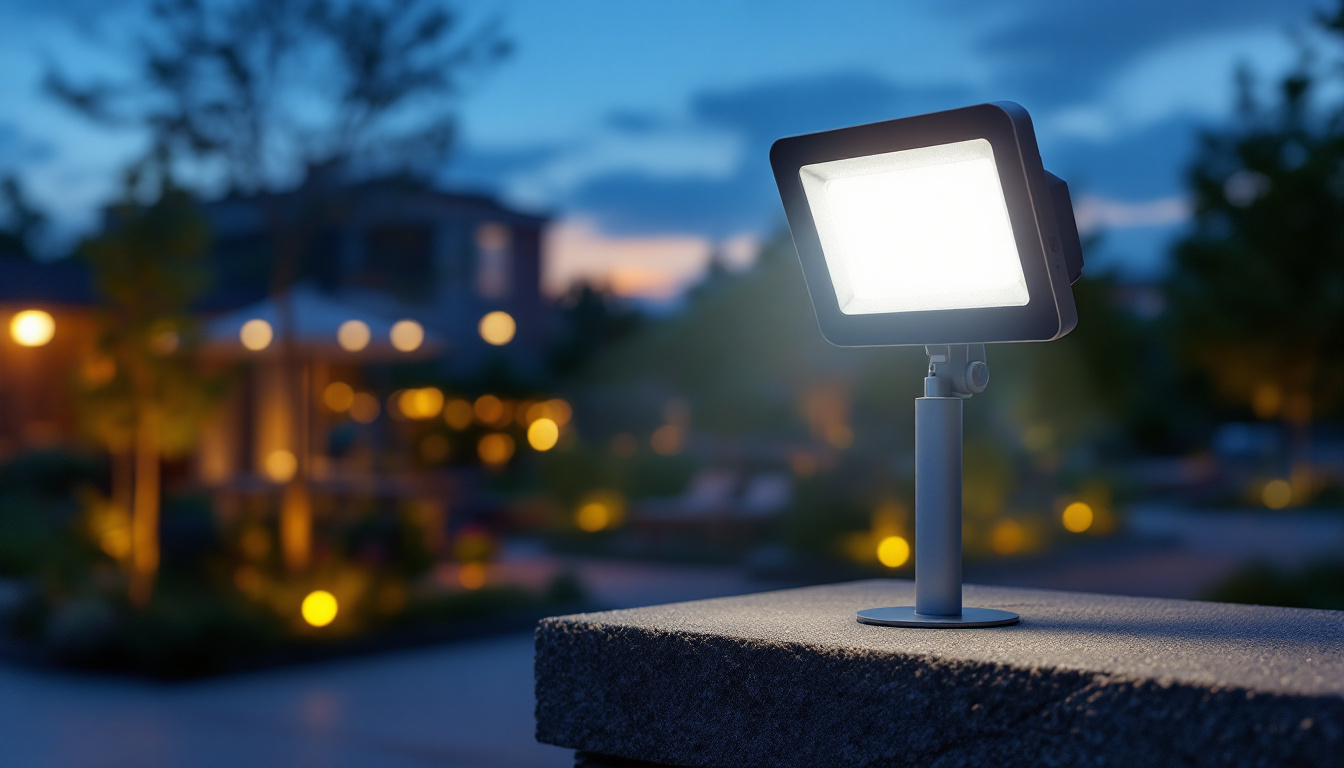
As outdoor spaces become increasingly popular for relaxation and entertainment, the importance of effective patio ceiling lighting cannot be overstated. For lighting contractors, this presents both opportunities and challenges. Understanding how to navigate these challenges can lead to successful projects and satisfied clients. This article delves into the complexities of patio ceiling lighting, offering insights and strategies for lighting contractors to enhance their work.
Patio ceiling lighting serves multiple purposes, from enhancing the aesthetic appeal of an outdoor space to providing safety and functionality. Proper lighting can transform a simple patio into an inviting area for gatherings, dining, or relaxation. It sets the mood, highlights architectural features, and ensures that the space is usable after sunset. The right lighting can create a warm ambiance that encourages social interaction, making it an essential element for any outdoor entertaining area.
Moreover, well-planned lighting can increase the value of a property. Homeowners are often willing to invest in outdoor lighting solutions that enhance their living experience and improve their home’s curb appeal. For lighting contractors, this represents a significant opportunity to showcase their expertise and creativity. Additionally, energy-efficient options, such as LED fixtures, not only reduce electricity costs but also appeal to environmentally conscious buyers, thereby broadening the market potential for outdoor lighting installations.
When considering patio ceiling lighting, contractors have a variety of options to choose from. Each type of lighting serves different purposes and can create distinct atmospheres. Understanding the nuances of each type can help homeowners make informed decisions that align with their lifestyle and design preferences.
In addition to these popular options, there are also wall-mounted fixtures and lanterns that can complement ceiling lighting beautifully. Wall sconces can provide additional layers of light and can be positioned to enhance the architectural features of the patio. Lanterns, whether hanging or placed on tables, can evoke a sense of nostalgia and warmth, making them perfect for creating a cozy atmosphere. The combination of various lighting types not only enhances functionality but also allows for a more dynamic and visually appealing outdoor environment.
While the potential for stunning outdoor spaces is immense, lighting contractors often face several challenges during installation. Understanding these challenges is the first step in overcoming them.
Outdoor lighting fixtures must withstand various weather conditions, including rain, snow, and extreme temperatures. Selecting the right materials and fixtures that are rated for outdoor use is crucial. Contractors should look for fixtures with appropriate IP ratings that indicate their resistance to moisture and dust.
Additionally, proper installation techniques can help mitigate weather-related issues. This includes ensuring that all wiring is protected and that fixtures are securely mounted to prevent damage from wind or heavy precipitation. Using weatherproof junction boxes and sealing connections with silicone can further enhance durability, ensuring that the lighting system remains functional and aesthetically pleasing through all seasons. Regular maintenance checks can also help identify any wear and tear before it leads to significant problems, allowing for timely repairs that keep the outdoor space safe and inviting.
Installing patio ceiling lighting often involves complex electrical work. Contractors must ensure that the existing electrical system can support the new lighting fixtures. This may require upgrading circuits or adding new wiring, which can complicate the installation process.
Furthermore, safety is paramount. All electrical work should comply with local codes and regulations. Contractors should be well-versed in these requirements to avoid potential legal issues and ensure the safety of the installation. It is also essential to consider energy efficiency; utilizing LED fixtures not only reduces energy consumption but also minimizes heat output, which is particularly beneficial in outdoor settings where overheating can be a concern. Incorporating smart lighting controls can further enhance the system, allowing homeowners to adjust brightness levels and schedules, thereby optimizing both functionality and energy use.
Another challenge is achieving a cohesive design that complements the overall aesthetic of the patio and the home. Lighting contractors must work closely with clients to understand their vision and preferences. This involves not only selecting the right fixtures but also determining the optimal placement to achieve the desired effect.
Moreover, balancing functionality with aesthetics can be tricky. For instance, while some areas may require bright lighting for safety, others may benefit from softer illumination to create a relaxing atmosphere. Contractors need to be adept at finding this balance to meet their clients’ needs. Incorporating dimmable options and layering different types of lighting—such as ambient, task, and accent lighting—can enhance the versatility of the space. This approach allows for a dynamic environment that can transition from lively gatherings to intimate evenings, showcasing the patio’s beauty while ensuring it remains practical for various activities. Additionally, understanding how different light temperatures can affect mood and perception can guide contractors in making informed choices that elevate the overall outdoor experience.
To navigate the challenges associated with patio ceiling lighting, contractors can implement several strategies that enhance their workflow and client satisfaction.
Before beginning any project, thorough planning is essential. This includes conducting a detailed consultation with the client to discuss their needs, preferences, and budget. Understanding the intended use of the patio can help in selecting the appropriate lighting solutions.
Additionally, creating a lighting plan that outlines the types of fixtures, their placement, and the overall design can streamline the installation process. This plan serves as a roadmap, ensuring that all parties are on the same page and reducing the likelihood of misunderstandings.
Incorporating technology into the design and installation process can significantly enhance the outcome of patio ceiling lighting projects. Tools such as lighting design software can help visualize the final result, allowing clients to see how different fixtures and placements will affect the space.
Moreover, smart lighting solutions are becoming increasingly popular. These systems allow for remote control and customization of lighting settings, offering clients flexibility and convenience. Contractors should stay updated on the latest technological advancements to provide clients with the best options available.
Quality should never be compromised in lighting installations. Using high-quality fixtures and materials not only ensures durability but also enhances the overall appearance of the patio. Contractors should source products from reputable manufacturers to guarantee reliability.
Safety is equally important. Adhering to electrical codes and regulations, as well as implementing best practices during installation, can prevent accidents and ensure a safe environment for clients and their guests. Regular training and certification in electrical work can further enhance a contractor’s credibility and skill set.
The relationship between contractors and clients should not end once the installation is complete. Providing ongoing support and maintenance can lead to long-term satisfaction and potential referrals.
Once the patio ceiling lighting is installed, educating clients on how to use and maintain their new lighting system is crucial. This includes demonstrating how to adjust settings, replace bulbs, and troubleshoot common issues. Providing a user manual or guide can also be beneficial.
By empowering clients with knowledge, contractors can enhance their experience and ensure that they make the most of their outdoor lighting. This proactive approach can lead to a positive reputation and increased client loyalty.
Offering regular maintenance services can be an excellent way to keep clients engaged and ensure their lighting systems remain in optimal condition. This can include routine inspections, cleaning fixtures, and replacing bulbs as needed.
Establishing a maintenance schedule not only helps prevent potential issues but also demonstrates a contractor’s commitment to quality and client satisfaction. This can lead to repeat business and referrals, ultimately benefiting the contractor’s bottom line.
Patio ceiling lighting presents a unique set of challenges for lighting contractors, but with the right strategies and knowledge, these challenges can be effectively managed. By understanding the importance of outdoor lighting, addressing common installation issues, and providing exceptional post-installation support, contractors can enhance their services and build lasting relationships with clients.
As outdoor spaces continue to evolve into extensions of the home, the demand for quality patio ceiling lighting will only increase. Lighting contractors who adapt to these changes and prioritize client satisfaction will find themselves at the forefront of this growing market.
Ready to elevate your patio ceiling lighting installations and overcome industry challenges with ease? Look no further than LumenWholesale for all your lighting needs. Our extensive selection of spec-grade lighting products ensures you have access to the highest quality options for any project. With unbeatable wholesale prices and the convenience of free shipping on bulk orders, you can provide your clients with premium lighting solutions that blend quality, affordability, and durability. Don’t let inflated markups dim your business potential. Choose LumenWholesale and experience the best value in wholesale lighting today. Visit our collection and start transforming outdoor spaces with confidence at Wholesale Lighting at the Best Value.

Explore the pros and cons of LED panel light ceilings compared to alternative lighting options.

Discover the art of illuminating spaces with precision and creativity in “Lighting Fruits: How Lighting Contractors Can Master.” This insightful guide explores innovative techniques, essential tools, and expert tips to help lighting contractors elevate their craft and transform environments with the perfect glow..

Discover how LED flood lamps are revolutionizing modern lighting solutions with their energy efficiency, versatility, and long-lasting performance.

Discover how commercial LED lighting is revolutionizing projects for lighting contractors.